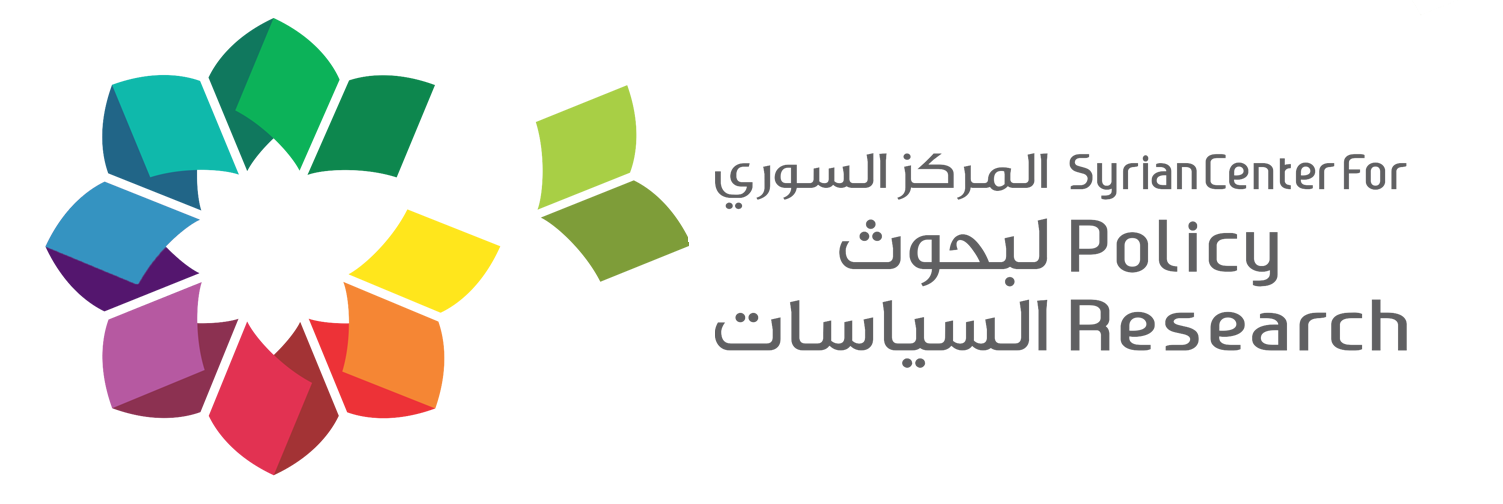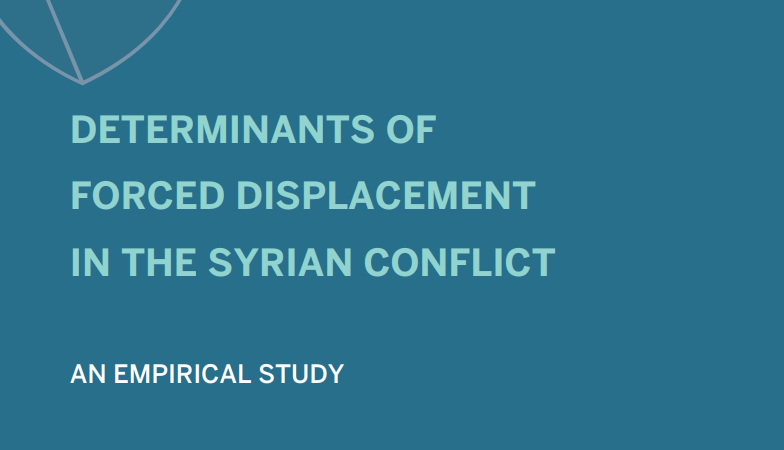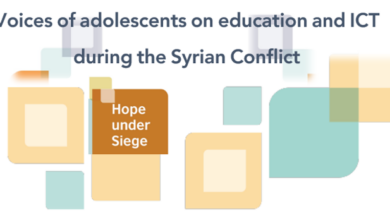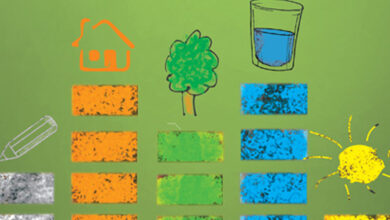More than half of the Syrian population has been displaced as a result of war, this paper sets out to understand the scale of displacement, its distribution, as well as, its driving factors. This paper seeks to analyse the correlation between institutions, social capital, economic and so76cial variables with rates of forced displacement and migration. Understanding the determinants of displacement is important so as to predict future displacements.
The conflict has greatly worsened the country politically, militarily, economically, and culturally resulting in the destruction of the foundations of society and state alike. The country has been divided, and governance has focused on violence and control over people and resources. Public institutions have been moulded by subjugation and despotism whilst cementing economies of conflict. Killing, besiegement, expelling, and torture have become institutional tools to impose dominance in a country riddled by mobile borders between regions. The conflict has divided the geography and wealth of Syria, sharing them amongst the conflicting forces and their allies. These factors in aggregate have led to the population distribution inside Syria to drastically change.
The most statistically significant factor was Mortality Rate. Displaced persons appear to seek to settle in areas less affected by conflict. The second strong association was the ‘Social Relationships’ indicator, where displacement rates are associated with low social capital areas. It seems that retrospectively the stresses that the arrival of migrants’ place on the host society has fragmented social ties. This tension between the displaced people and the host community is well documented. The degradation of institutional performance, the absence of legal authority, along with the severe violation of rights, discrimination, and systematic looting are among the main factors that forced people to evacuate their cities and towns. Governance levels and institutional performance were found to be positively associated with displacement rates showing that people move to areas with lower rates of discrimination, corruption, and lawlessness. Living Conditions were found to be the next significant factor, indicating that displaced persons seek places that have better services such as communications, transportation, electricity, water, and employment. Another important factor was Human Development, as people are attracted to areas with higher levels of human development like good education infrastructure with higher-quality teaching staff and higher rates of enrolment.
When it comes to the push factors that drive displacement, the results show the strong negative relationships between forced displacement and indices for living conditions, education, and institutional performance. The results also point to the extremely strong association that conflict-associated mortality has on driving displacement. The intensity of the armed conflict, deterioration of governance levels and the social and service conditions contribute to the forced displacement of people from their places of residence.
The ending of the conflict, as well as the safe and voluntary return of displaced populations, depends upon the extent to which institutions can under-go structural transformation and improve performances. These institutions must gradually expand the space for participation, dialogue, and accountability. This will enable a public dialogue on how to overcome both the effects of war and its root causes. It would serve to build a social, economic, and political environment, where armed violence is not used to solve disagreements and problems. This new environment should work to compensate and overcome the effects of the deprivation of education, healthcare, and nutrition services. Trust among members of society must be rebuilt. This could be done through the development of the social politics that allow bridge building, and cross-boundary solidarity. A productive sector and fair opportunities for all members of society to participate in must be provided. It is important to set the proper legal and moral restrictions to prevent the use of health, education services, and food to be used as weapons of war. Civil society stands out here, as a new economic contributor that can expand the economic base, to serve the public interest.
To Download The Study:







